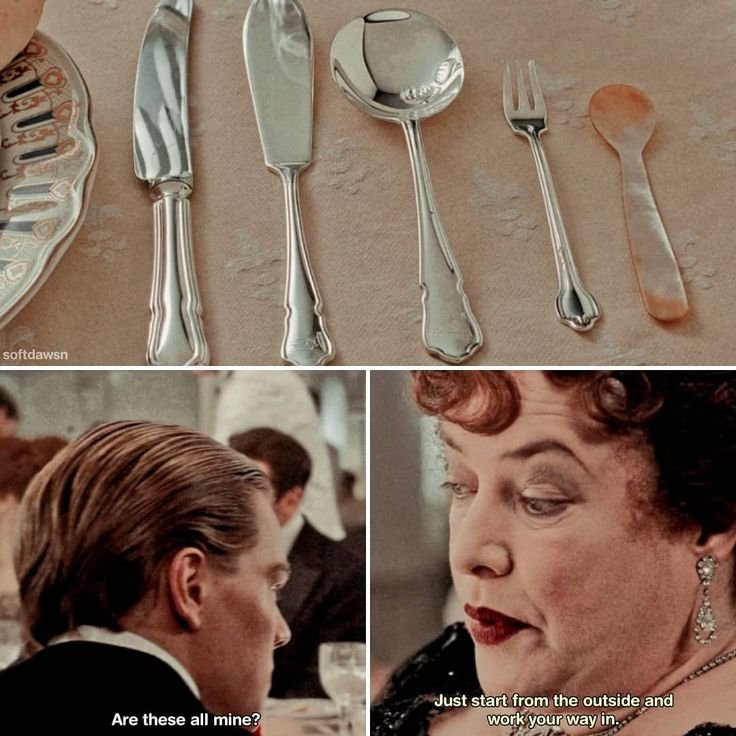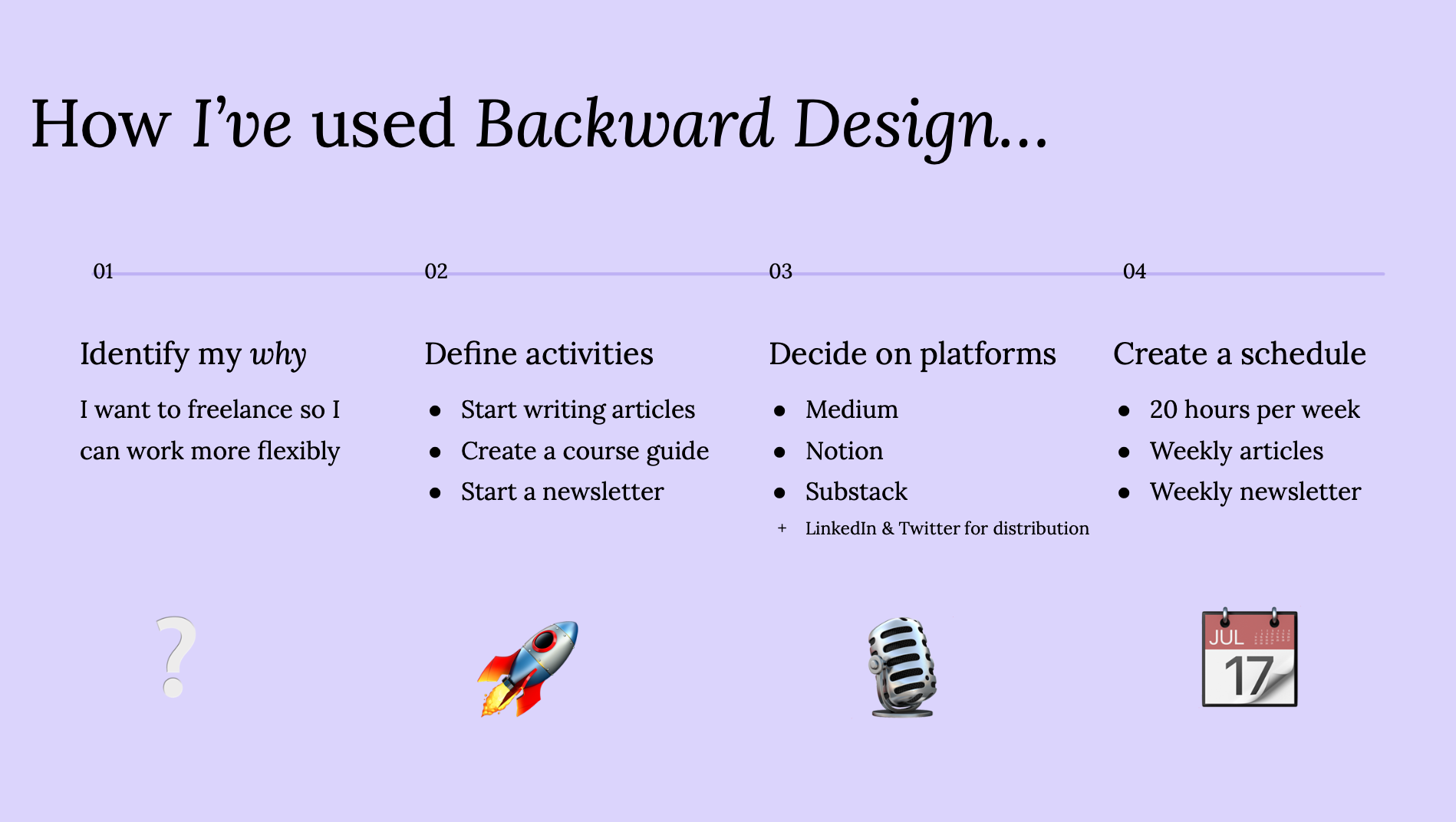What a subtle scene from Titanic can teach you about getting your dream job
Titanic can teach you a lot about getting your dream job.
I’m talking about the scene where Jack—daunted by First Class cutlery—turns to the “new money” chick on his right, and asks, “are these all mine?”
“Just start from the outside and work your way in”, she whispers.
You can attract your dream job in the same way. Leverage your way into organizations by showcasing your fit from the outside. I’ve done this myself after eight years of banging my head against the wall with the traditional job search, and it’s completely changed the game—with job offers, scholarships, and speaking gigs pouring in.
Like most people, my default was waiting. Waiting to be “anointed” with titles by employers, like court jesters living in Medieval times. But the joke’s on us. We have everything we need to step into new titles long before we join organizations willing to validate them.
We need to validate ourselves first. It’s the difference between someone calling themselves an aspiring writer, versus a writer. Though this obviously doesn’t apply to people landing 747s or performing root canals—you can’t be a self-appointed pilot or dentist.
Do so you can be
I joined Twitter a year ago, and discovered a world of “creators”. People from every field imaginable working on side hustles and passion projects that solve problems for others through audience building, trauma-informed yoga, new video chat features—you name it. Many have attracted dream jobs, collaborations, event invitations—and grown their network to include industry experts—by showcasing their skills and potential from the outside.
Since then, I’ve been doing the same to attract jobs, projects, and speaking gigs of my own. And, guess what? I’m celebrating six months of self-employment. Six months of opportunities coming to me, versus hunting and applying for them.
It’s easier and more rewarding to start from the outside and work your way in, than simply waiting to get into an organization—especially when you have drive. Working your way in from the outside is the equivalent of having a block party before getting the VIP welcome at your venue of choice. By contrast, the traditional job search would be the equivalent of standing outside the venue waiting and hoping for the line to crawl forward, while stressing about whether the bouncer will let you in based on a quick first impression.
The hidden job market
“Research shows that 70% of all jobs are not published publicly on jobs sites and as much as 80% of jobs are filled through personal and professional connections.”—Julia Freeland Fisher, CNBC
After years of enduring the pains of the traditional job search, someone told me about the “the hidden job market”.
I’d undergone eight years of traditional job searching, from the time I was a new grad up until I changed career paths at age 30. Each time, I spent hours—sometimes full days—looking through ads, researching organizations, preparing cover letters and CVs—getting super excited about the potential of working for a company. But then… crickets. I wouldn’t hear back. It was extremely discouraging—I wasted so much time and energy. Some days felt hopeless.
If you’ve felt the same, know that you’re not alone—and it’s not you. Turns out the hidden job market is cold-hearted toward those not privy to it. That’s how I realized how crucial our networks are to helping us find and secure new roles.
I knew networking was important but when I was a new grad, traditional networking meant walking into a room full of strangers to pitch yourself or ask for business cards. It was intimidating—and superficial. The other downside to traditional networking is being limited to connecting with people in your area.
The good news is online networking is the default now—presenting enormous opportunities to attract job offers from around the world. But the online networking game has different rules.
So how do you become a power player?
The ‘Backward Design’ strategy
‘Backward Design’ is a concept from learning design that identifies desired outcomes for a course or activity. Then you work backwards to determine what instructional methods you’ll need to help students achieve those outcomes.
Backward Design can be used to reverse-engineer the path to your dream job. The goal is to grow your network by showcasing your skills and potential. You’ll attract more job offers exponentially.
Here’s how I’ve used Backward Design to make a career change:
All of these opportunities are results of putting myself out there—of showcasing my skills and potential.
Your goal is to figure out how you can attract your dream job using Backward Design.
Who would you hire?
Pretend you’re a hiring manager for an online course platform. You’re looking for an operations coordinator to start as soon as possible. You’re overwhelmed with work and want to hire someone with minimal time and effort. Which candidate are you most likely to invite for an interview?
Candidate A: A friendly recent grad you met at a networking event who mentioned they’re interested in the role. They have a Bachelor’s degree in a related field—but you can’t remember what. You don’t know anything else about them.
Candidate B: A recent grad your colleague found online through their YouTube tutorials on ‘Zoom best practices.’ Their channel has over 20 videos and you notice they’re charismatic on camera, great at public speaking, and talented at breaking complex technical information into easy to follow instructions.
Who would you interview—and most likely hire?
Give this some serious thought because this is a common hiring dilemma. And the sooner you understand “the game”, the better you’ll be able to play.
This is where Backward Design comes in—the idea that you can attract job offers by showcasing that you’re already doing the type of work they entail. By putting your work online, you’re showing you’re a self-starter, you’re confident, you’re competent—you name it.
Sharing your work online will transform your career landscape. That’s what it’s done for me and those I know doing the same.
By “showing” you work versus “telling” people about it, you build credibility and authentic connections across your field. You can also connect with industry leaders worldwide.
Where I am now
Six months ago, I launched a freelance career by attracting jobs and projects to me. I’m confident you can do the same—even as a new grad or career changer.
You’ll have a lot more fun learning and showcasing your skills, than you will hunting through job ads and preparing applications. Plus don’t forget, 70% of all jobs are never listed publicly.
Join my free workshop to leverage Backward Design
The hidden job market is where many opportunities are waiting to be discovered. Backward Design is a great way to attract job offers, and to do that you need to show your work—not just tell people about it.
Figuring out how to do this can be overwhelming—don’t forget, I’ve been there. Think of yourself as Jack in Titanic daunted by First Class cutlery, and think of me as the “new money” chick tipping you off to, “start from the outside and work your way in”.
If you’re keen to attract job offers using Backward Design, join my free workshop to map out your strategy.
Sign up to my newsletter to get notified about the next date.
__________________________
Thanks for reading my article. To stay in the loop on similar posts and resources, please subscribe to my newsletter.





